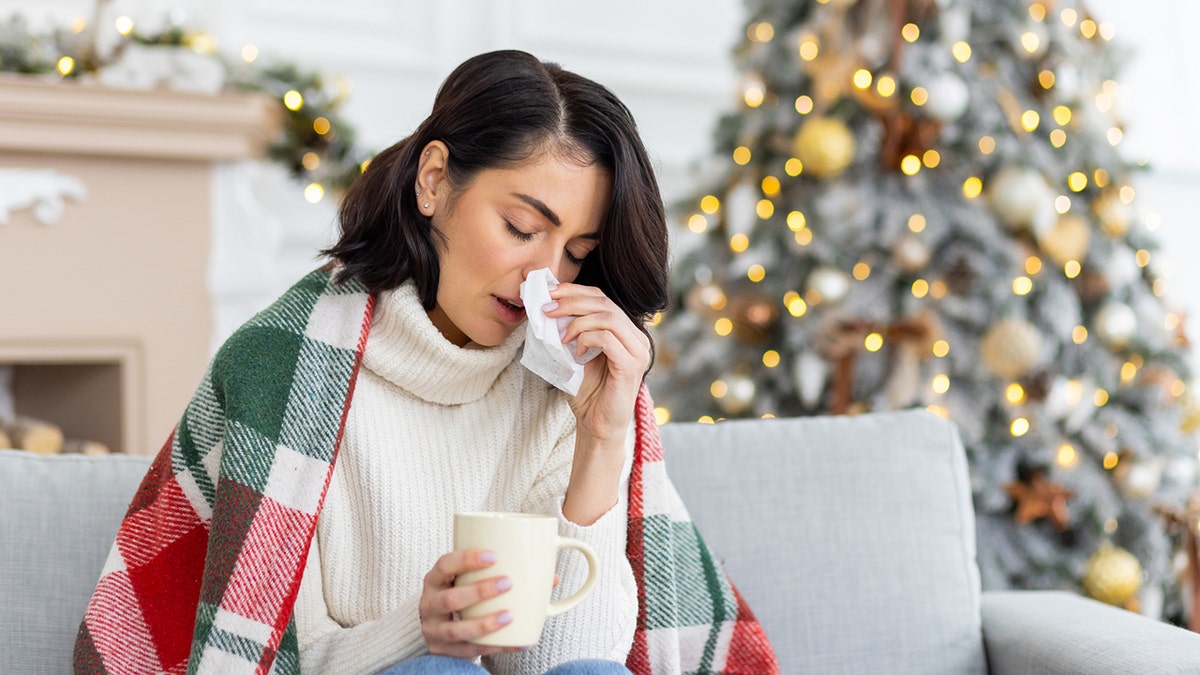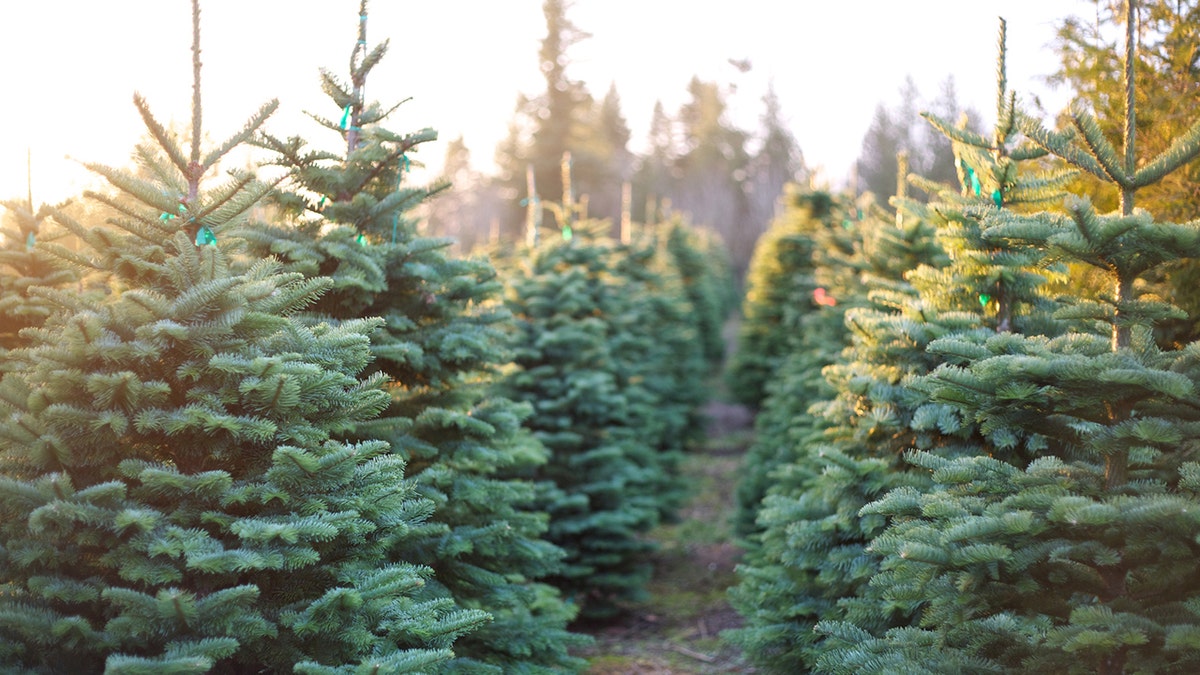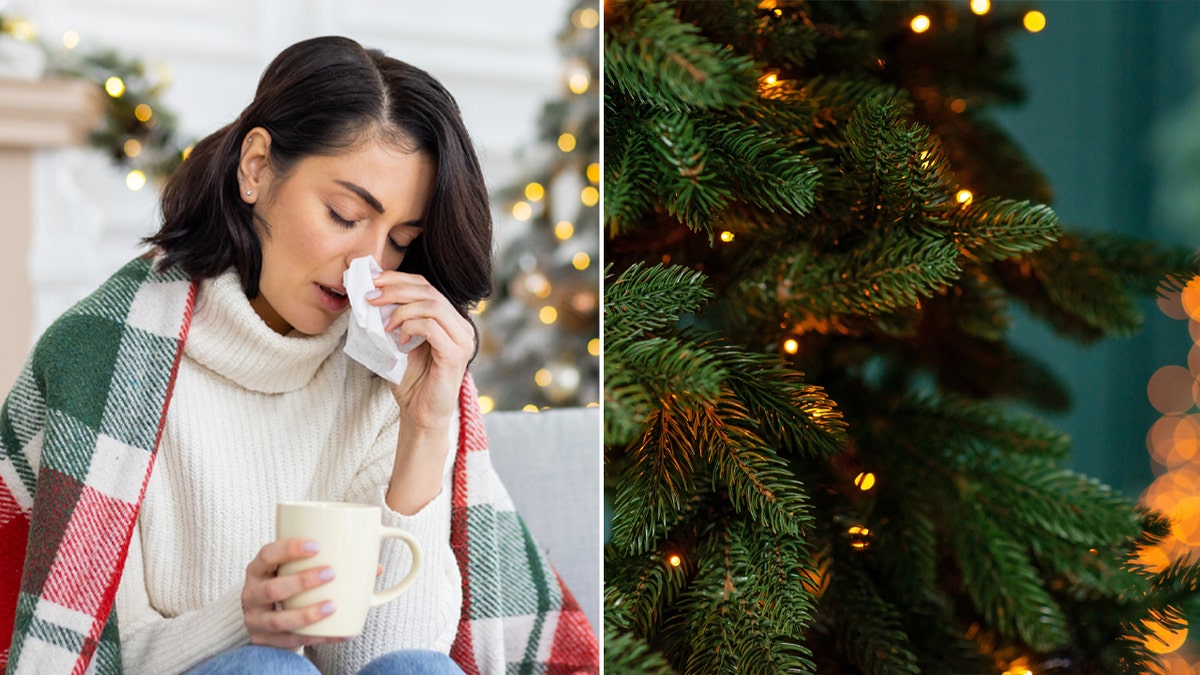Fox News Flash top headlines for December 14
Fox News Flash top headlines are here. Check out what's clicking on Foxnews.com.
If you or a loved one seems to experience an allergic reaction each year when the Christmas tree arrives, you're hardly alone.
"Christmas tree syndrome," as it's called, isn't a reaction to the tree itself, but to "the mold or dust that's found on both real and live trees," Dr. Chelsea Azarcon, a California-based naturopathic medical doctor, told Fox News Digital.
The most common reaction, she said, is sneezing and itchy, watery eyes.
CHRISTMAS TREE SHOPPING? HERE’S HOW TO SELECT THE PERFECT ONE FOR YOU
A less common reaction is a skin reaction like hives.
"That could be an anaphylactic reaction," she said, warning that type of reaction could be more serious, particularly if accompanied by trouble breathing.

Did you know your Christmas tree could make you feel sick? Doctors call it "Christmas tree syndrome" — and it can happen whether you have a live or an artificial tree. (iStock)
People who have pollen allergies aren't likely to experience "Christmas tree syndrome."
That's because pollen is only produced in the spring.
Yet people who do have an allergy to pine or peanuts could be at a greater risk, Azarcon said.
THESE HOLIDAY DECORATIONS AND TREATS COULD POSE A THREAT TO PETS, VETERINARIANS WARN
Since dust and mold are the biggest culprits, Azarcon recommended investing in an air filter and running it during the holidays, plus "washing" your tree before bringing it inside.

If you have a pine or peanut allergy, you may be more susceptible to "Christmas tree syndrome." (iStock)
That, she said, applies to both live and fake trees — as artificial trees can collect dust and other allergens while placed in storage.
There are three effective ways to "clean" your tree, according to UCLA Health.
FOODS THAT MAY HELP CALM SEASONAL ALLERGIES, ACCORDING TO HEALTH EXPERTS
Before you bring your tree inside your house or apartment, you can remove many allergens by:
- Shaking the tree to remove loose debris
- Rinsing the tree with a hose and allowing it to dry thoroughly outside first
- Blowing debris from the tree using an air compressor
You can also vacuum an artificial tree or wipe it down.

"Christmas tree syndrome" is a real thing, and you may be affected by it, but there are a few tips and tricks to avoid the holiday haze. (iStock)
If your tree is already up and you can't seem to shake the reaction, Azarcon recommended Zyretec or Claratin for itchy, watery eyes and Benadryl for hives.
And while dust and mold are the most common culprits, there is one more possible but far less likely cause for your discomfort: a reaction to terpenes, the compound that gives Christmas trees their scent.
CLICK HERE TO GET THE FOX NEWS APP
"This can cause respiratory inflammation," Azarcon said.
"The reaction is similar to when there's a lot of smoke in the air."
If you tend to develop a rash when coming into contact with a Christmas tree, have someone else decorate it and "wear long sleeves and gloves if you need to touch the tree," UCLA Health advises.
CLICK HERE TO SIGN UP FOR OUR LIFESTYLE NEWSLETTER
If you're experiencing any reactions, speak with your doctor or health care provider, who can assist with managing symptoms.
For more Lifestyle articles, visit www.foxnews.com/lifestyle.

